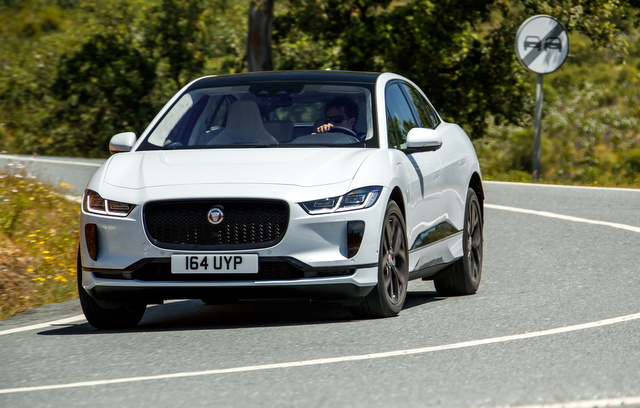This Post May Contain Affiliate Links
Tradition Meets the Modern EV
Can there be anything more iconically British that the Jaguar? The first Jaguar cars were manufactured in September 1935—the SS Jaguar 2.5-liter sports saloon, alongside the two-seater SS Jaguar 100. SS referred to the motorcycle company, S. S. Cars Limited. But eventually, shareholders agreed to change the name for Jaguar, which they judged distinctive and empowering.
More than 85 years after the first Jaguar car was produced, the manufacturer has had a long history of bringing powerful engines in eye-catching bodies to the road. But at a time where CO2 emissions play a huge role in the reliability and quality of a vehicle, the iconic manufacturer needs to encompass green objectives. How is the storied brand that gave us the prestigious E-Type bridging the environmental gap?
A New EV style, I-Pace, Was Introduced in 2019

In 2019, the prestigious British marque brought the Jaguar I-Pace to the market, its first step into the electric motoring market. The I-Pace won the 2019 Germany’s Car of the Year Award, a label of quality for a first all-electric vehicle. The model is a real crossover, combining the roomy interior of an SUV with the modernized styling of the classic Jag. Yet, a trip to your local Jaguar Dealership will reveal that the I-Pace is a car that turns a new page for the manufacturer, fully embracing a Tesla-shaped future. For those who fell in love with the classic Jags, such as the iconic E-Type or Mark 2, can there be a green model that makes the prestigious designs from the past relevant again?
The Manufacturer Has Been Experimenting with Classics

Jaguar has also developed a hand-built line that turns classic models into eco-friendly electric vehicles. The proof is the pale blue 1968 E-Type that Prince Harry and Meghan Markle use at the royal wedding. The Jaguar Concept Zero car pulled away silently thanks to its updated electric powertrain. The hand-built model ultimately modernizes the classic car by replacing the traditional engine with an electric powertrain that fits in the space of the former base six-cylinder engine. In other words, the British manufacturer is allowing car lovers to bring their classic Jag into the future. However, they’ll have to pay a half-million GBP for the transformation, making it an unlikely option for most car owners.
A New Plug-in Hybrid Model Is Efficient
Jaguar’s new plug-in hybrid model, the F-Pace P400e, is a marriage of performance and design. The shape evokes some of the most recognizable Jaguar styles with the elongated front similar to the E-Type. Power comes from a 2.0-liter gas engine and a 17.1-kilowatt-hour battery. Buyers can even settle for the F-Type convertible that looks almost identical to its 1960s cousin. Yet, performance and CO2 emissions are beyond comparison with 0-to-62 mph in only five seconds for the updated plug-in hybrid. Nevertheless, hybrid models have yet to win over the audience. The competition against other manufacturers, such as BMW or Volvo, proves difficult. The BMW X5 xDrive45e, for instance, can cover a longer distance on one charge for a similar performance on the road. Volvo XC60 T8 offers a similar road performance at a lesser cost.
Are Jaguar cars getting greener? The answer is yes. However, we are still a long way away from reintroducing economic E-Type or Mark 2 models as a green alternative to the EV competition. Jaguar lovers, yet, can hope to see more revisited classics in the near future, as the option is already available. For those who prefer a modern design, the I-Pace is Jaguar’s quality response to Tesla.
More Jaguar News
Road Test: 2019 Jaguar I-Pace
Flash Drive: 2019 Jaguar I-Pace
News: Royal Wedding Highlight—A Classic Jaguar EV
Flash Drive: 2017 Jaguar XE

2 thoughts on “News: At 85, Is Jaguar Going Green?”